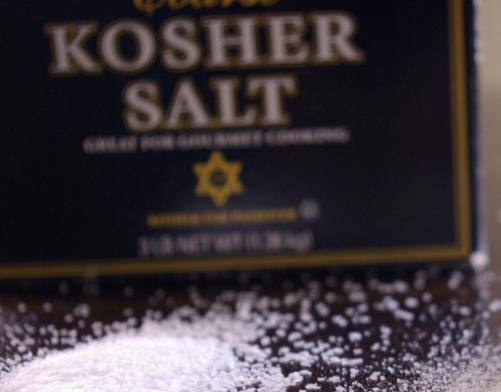Reprinted by permission of McGill University Office for Science and Society.
###
Kosher salt should really be called “koshering salt” because it is used to draw blood out of meat based on the biblical reference that consuming blood should be avoided. It is not blessed by a rabbi nor is it healthier than any other salt. The only difference is that it is composed of large irregular shaped flakes which, after slathering it on a piece of meat to draw out the blood, can be easily washed off.
There is only one nutritional difference between regular salt and kosher salt. The kosher variety has no added iodide. This addition of iodide to salt began in the 1920s to remedy the increased incidence of goiter, a swelling of the thyroid gland caused by a lack of iodine in the diet. Back then, many people were limited in their diets and therefore lacked iodine. But that is not the case in North America today. Using kosher salt is not going to lead to iodine deficiency, which is definitely a good thing since many chefs prefer using kosher over regular. Think about it, it's far easier for a chef to gauge how much salt is being added to a dish when dealing with those larger crystals! Because of the space between the grains of kosher salt, a spoonful of regular salt will have about twice the salting power of kosher salt. Something that has to be taken into account when recipes that call for salt by a measure of volume are being used. Let's leave that to the chefs, shall we?
The original McGill University OSS post can be found here.




